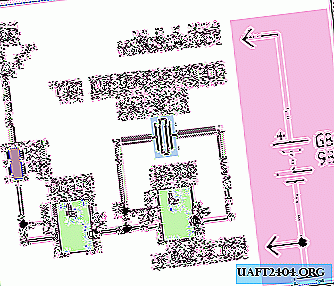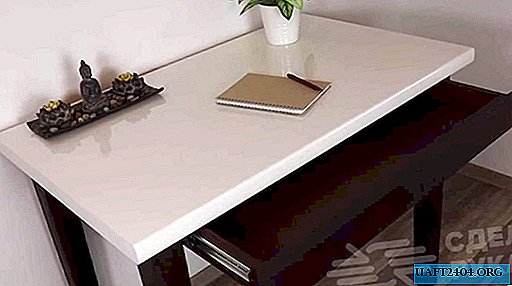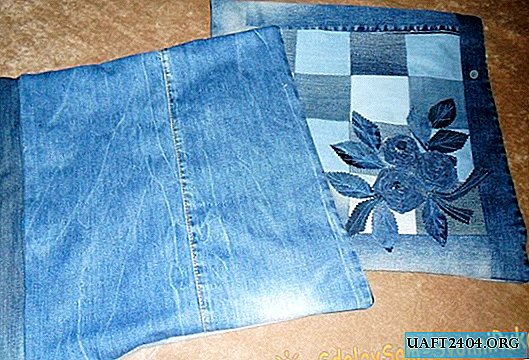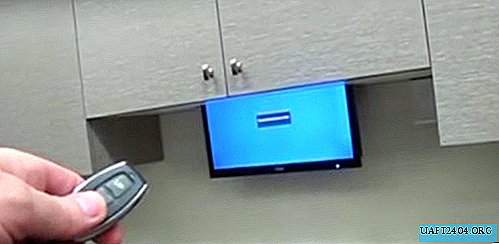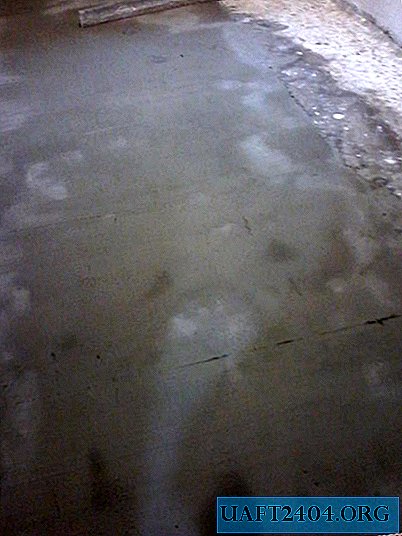Share
Pin
Tweet
Send
Share
Send
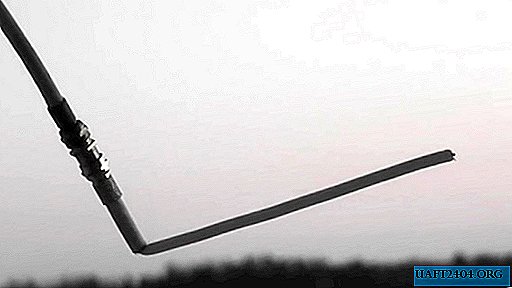
Analog television is a thing of the past, therefore, to maintain the ability to watch TV shows, a transition to DVB-T2 broadcasting is required. For this, it is necessary to use a specialized antenna, which can be made personally from the available materials, which I will do.
Materials and Tools Required
To make the antenna you will need:
- a piece of television coaxial cable 20 cm;
- HF connector (transition from F type connector to a TV plug);
- F type connector.
You will also need the simplest set of tools that everyone can find. It is enough to have a tape measure or ruler, a sharp knife, wire cutters or pliers.
Determining the frequency of broadcasting in the city

Before you begin assembling the antenna, you must first find out the frequency of digital broadcasting in the region. Since I live in Russia, for this I go to the official website of the digital television of the Russian Federation. On it, I look for the tab "CETTV coverage map" and select my locality. On the map that opens, you need to find the nearest repeater and click on it with the cursor.
In the window that appears, click on the link "more". As a result, detailed information on the digital television settings of this repeater will open. In my case, two packages of RTRS-1 and RTRS-2 television channels are presented. I am interested in the direct frequency in megahertz. Available packages are broadcast at 754 and 778 MHz.
Based on these data, it is necessary to calculate the actual length of the working part of the antenna in centimeters. A simple formula is used for this. It is necessary to divide 7500 into each frequency. In my case, 7500/754 = 9.94 cm and 7500/778 = 9.6 cm.
Thus, in order for the antenna to accept both frequencies normally, it will be enough to make it 10 cm long. Naturally, residents of other cities will get a different result, but regardless of this, the direct manufacturing process is completely identical.
Direct manufacture
To make an antenna you don’t have to buy anything, since in most cases all the necessary materials are already available, as they were used to ensure the operation of analog television. First you need to take a piece of coaxial cable of about 20 cm. One of its ends is stripped to secure the F connector. To do this, remove the top insulation about 3 cm from the edge to open the cable screen. The bare winding together with the protruding foil is bent to the opposite end from the working edge.
After this, 3 mm back from the obtained edge of the cut of the upper insulation, you need to cut the cable to the central copper core. After that, the F type connector is screwed. The copper core of the wire protruding in its center is cut so that its tail extends beyond the connector by no more than 1 cm.
Now, the RF connector is screwed onto the F connector, which is subsequently connected to the TV plug.

Having retreated about 3-4 cm from the edge F of the connector, already in the opposite direction, you need to put a mark on the coaxial cable. From it is measured as much as was calculated by the formula, and the wire is cut off. I cut through 10 cm.

According to the previously set mark, it is necessary to cut through the upper insulation to the screen winding. It is removed, as a result of which the inner insulating layer opens.



The existing screen winding is removed because it is not needed, as it creates an obstacle to picking up the signal. The antenna itself is bent at 90 degrees in the place of the step between single and double insulation.

Now the antenna can be screwed directly into the connector on the TV or set-top box, if DVB-T2 is not supported by it.

With sufficient proximity to the repeater, the signal is captured clearly enough to watch TV without interference. If the picture ripples and slows down, then the antenna will have to be put out on the street. For this, a coaxial cable of the required length is used, well, a couple of additional adapters.
Channel setup and search
TV setup is very simple. Everything happens automatically. We choose the search for just digital or digital and analogue channels.

We start the search and wait for a while.

About a dozen channels were caught.

The feasibility of using an antenna
Making an antenna will only help if the TV supports the DVB-T2 digital television reception function. Outdated models are deprived of such an opportunity, therefore, they require the purchase of a specialized set-top box, in the kit for which the antenna usually already goes.
It is also important to check the presence of a nearby repeater before manufacturing. The effective range of such an antenna cannot exceed more than 6-15 km. This is only subject to good visibility of the tower without waves of high-rise buildings and other obstacles located on the trajectory of movement. If the distance is greater, then the use of an additional amplifier will be required, which ultimately also depends on the purchase of a specialized TV set-top box.
Share
Pin
Tweet
Send
Share
Send

